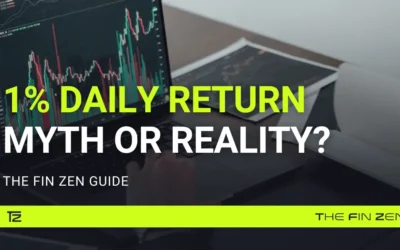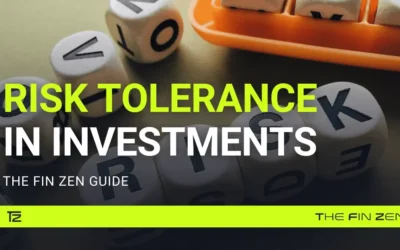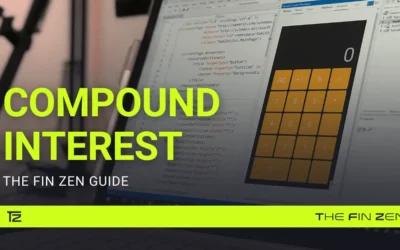If you are looking to make trading your full-time job by becoming a profitable investor, this article can help you reach your goal. However, before starting to invest, you must have a solid knowledge of the underlying strategies and risks so that you can avoid incurring significant losses. In fact, aiming, for example, to gain a 1% daily return is likely impossible: You should focus on risk management to avoid losing money and carefully analyze the asset before investing. Is it undervalued and has potential for growth? To understand that, you need technical analysis to understand if the price of the asset is currently undervalued and fundamental analysis to understand if it has solid fundamentals for long-term growth. If you’re focusing on the short or medium term, technical analysis is what you need. But what is it?
Technical analysis is the method used by traders and investors to analyze an asset and try to predict its future movements based on historical price data, volume, and other technical indicators. It’s the most common analysis method, especially for the short and medium term, and it’s used in stocks, forex, crypto, and other financial markets. So, before starting investing, let’s first understand how technical analysis works in more detail.
Nobody is born “skilled”, you have to start somewhere. So, let’s try to give a general overview of the topic, starting with understanding what trading is and how it can be implemented in our adventures in the financial markets and delving into some of the main indicators on which technical analysis is based.
What is Online Trading? A simple Introduction
The concept of trading is very simple. Trading in financial markets consists of buying and selling assets with the aim of making a profit. Simple, right? After all, price movements are not too many: either they go up, or they go down.
Whatever the instrument chosen, the final objective is always the same: making a profit. If your prediction on the market movement is correct, you will make a profit, but if the market moves in the opposite direction, you will suffer a loss.
Traders and Investors: Two Profiles, Two Approaches
We are outlining one of the two professional figures that roam these dangerous places called financial markets.
The difference between traders and investors lies in the way in which the profit is made and the period of holding the asset. Traders make profits by buying low and selling high (going long) or by selling high and buying low (going short), usually in the short or medium term. Since the trader operates only on the future movement of the market price, whether it is bullish or bearish, he does not hold the underlying asset. Investors, on the other hand, aim to buy the underlying at a favorable price but not with the aim of selling it as soon as it revalues, but with the intent of remaining invested in that company, being part of it and taking part in the profits generated by it.
In short, the trader speculates in the short term, the investor invests for long periods of time. Warren Buffett, the greatest investor of all time, specifies: “Our favorite holding period is forever…”
Having outlined this difference, let’s not waste any more time and see which tools we can rely on to operate as traders.
What is Technical Analysis?
Online trading is based on technical analysis, which is the study of the price movements of various assets over time, in order to predict future trends, mainly through graphical and statistical methods. Technical analysis refers exclusively to the asset price graphs. To predict variations, it is based purely on the identification of structures in the graphs. Technical analysts use a series of tools to identify trends and structures in the graphs. We cite moving averages, support and resistance levels, indices or key levels such as Fibonacci. All the tools serve a single purpose: to facilitate the understanding of the graphs’ movement and the identification of patterns, in order to “guess” in which direction the price of the asset will go. Do you notice a bit of skepticism in what I write? You are right.
Let’s try to delve deeper into the subject, studying in a little more detail some of the most used indicators, without however trapping ourselves in explaining the various mathematical calculations that the indicators use to work.
Moving Averages
Moving averages are very common indicators that help traders visualize the average price of an asset over a given period. They are basically a single line on the chart that shows the average price of the asset, helping traders to get a clear view of the trend of the asset in question. As mentioned, there is no default value regarding the period, some set it to 3 days, others set it to 20. It is not uncommon to see combinations of multiple moving averages working together, and the crossovers identify a certain trend.
There are two types of moving averages:
- Simple Moving Average (SMA): The SMA is the simple calculation of the arithmetic mean of prices over a specific period, such as 10 days, 1 week, etc. The formula is quite simple, but it does not provide information about the most recent data.
- Exponential Moving Average (EMA): The EMA is more suitable for dynamic and volatile markets because, unlike the SMA, it gives more weight to recent prices, making it more responsive to new information and changes in trend.
Relative Strength Index (RSI)
The relative strength index is a momentum indicator and shows a linear chart on a scale from 0 to 100. In practice, it measures whether an asset (crypto, stocks, bonds, etc.) is oversold or overbought. Traditionally, the common interpretation is:
- If RSI > 70, the asset is overbought: bearish signal.
- If RSI < 30, the asset is oversold: bullish sign.
Supports and Resistances
Supports and resistances are among the simplest, but perhaps also most effective, tools. They are visible to the naked eye and coincide with the price levels on which the chart frequently reacts. Resistance is found above the market price and coincides with the price area on which the asset often stops its bullish run, or the point at which during the previous bullish rally the price rebounded during a retracement.
Vice versa for supports. Support and resistance can coincide with key price levels, and are called psychological supports or resistances. They are often found around prices such as 1,5,10,50,100 etc…
Fibonacci Retracements
The Fibonacci sequence is a series of numbers that begins with 0 and 1, where the next number is the sum of the previous two numbers. The sequence goes like this: 0, 1, 1, 2, 3, 5, 8, 13, 21, 34, 55, 89, 144, and so on. An important feature of this pattern is that each number is approximately 61.8% of the next number in the series. For example, 8 divided by 13 is 0.615. Likewise, 89 divided by 144 is 0.618. The higher the pair of numbers, the closer the ratio gets to 61.8%. This value is known as the “golden ratio”. There are several other important sections within the pattern. The ratio of 38.2% emerges when you divide a number in the series by the number two places to the right. The ratio of 23.6% is found by dividing a number in the series by the number three places to the right. For example, 8 divided by 34 is 0.235.
The golden ratio of 61.8% appears frequently in nature, biology, architecture, and art. It is found in flower petals, tree branches, human DNA, and population growth. The golden ratio and other Fibonacci ratios are also often found in financial markets; these ratios form the basis of the Fibonacci retracement tool.
This indicator is used to identify the point at which the price stops retracing and returns to ride the main trend from which it was retracing. These points often coincide with the key ratios we discussed earlier.
These are just 4 of the many indicators that traders invent to look for that magic formula that allows them to guess the future direction of the price, listing them all would be very difficult, also because they are often combined, adapted to the needs of traders, modified based on the strategies and beliefs of each.
Technical analysis for the investor
Now it’s time to give you some bad news: knowing how the indicators on which technical analysis is based work is not enough to resign from your job and live carefree on returns on the markets. In fact, technical analysis is only one of the many analyses that the investor or capital manager must know. Sometimes, long-term investors completely neglect technical analysis! This type of operator combines technical analysis with fundamental analysis as well as macroeconomic analysis, giving greater weight to one rather than the other based on their strategy, without ever ignoring one.
Technical analysis, if used in isolation, does not allow you to grasp the deeper dynamics of a market. Macroeconomic, political and management-related factors play a fundamental role in the performance of stocks, factors that technical analysis is unable to capture. Imagine being in the midst of the 2008 crisis and wanting to look at the chart of Lehman Brothers stocks. Who knows how many key levels the price touched during the decline. No support, no Fibonacci 61.8 level, no oversold on the RSI stopped the catastrophe and soon the world economy sank into a deep crisis. Or maybe, it all happened simply because the price reached a line drawn on some chart, who knows?
Ok, maybe it’s an exaggerated example, but it’s useful to understand the importance of combining technical analysis with other types of analysis. What has been written so far is well suited to a person who is interested in remaining invested in a certain asset in the long term, but who tries to optimize performance by doing Market Timing. These types of traders typically make a more simplistic use of technical analysis, giving it little weight in favor of other types of analysis.
Technical analysis for traders: example of a strategy
Other market operators only have speculative interests and it does not matter at all what the underlying is that they are trading, so they carry out much more in-depth technical analysis to the detriment of other types of analysis. The writer of the article does not believe that this is the right path to take but, for educational purposes, let’s see how a trader can operate on the markets using only technical analysis.
Having a strategy is essential in the bare and raw approach to trading. This allows you to cushion the effects of emotion and act on instinct. The market is truly a dangerous place and it is easy to fall into its traps without a map that shows us the right path. One of the main fatal errors committed by new traders is Revenge Trading: an impulsive and risky behavior that often occurs after a trade gone wrong. In practice, the trader, driven by the desire to quickly recover the sums lost, carries out additional operations, often without a solid analysis and with a very high level of risk.
Having a strategy allows us to stem these fatal impulses. Here we formulate a very simple strategy as an example:
Timeframe:
Daily or weekly (to identify more robust trends)
Indicators:
- Exponential moving average (EMA): Allows you to follow the general trend of the price, attenuating the market noise.
- RSI (Relative Strength Index): Indicates the speed and amplitude of price movements, signaling potential overbought and oversold zones.
Entry rules:
- Buy: When the short-term EMA (e.g. 20 periods) crosses the long-term EMA (e.g. 50 periods) upwards and the RSI is above a pre-determined level (e.g. 50).
- Sell: When the short-term EMA crosses the long-term EMA downwards and the RSI is below a predetermined level (e.g. 50).
Exit rules:
- Take profit: A predetermined price level above the entry (e.g. 15% of the purchase price).
- Stop loss: A predetermined price level below the entry (e.g. 5% of the purchase price).
Risk management:
Place only a limited percentage of your total capital per trade. Additionally, remember that every trader has a different risk tolerance: Evaluate yours by analyzing personal factors such as funds availability, your age, your returns’ goals, and more.
Risk / Reward ratio
The Risk/Reward ratio is a ratio that indicates the potential profitability of a trade compared to the risk incurred.
- You buy a stock listed at $10.
- You place a stop loss at $9 (risk of $1).
- You place a take profit at $13 (potential gain of $3).
By adopting an R/R ratio equal to 1:3 for each trade and always allocating the same amount of money, the trader will be able to avoid going at a loss by getting only 3 trades out of 9 right. Getting only ⅓ of the trades right will be enough to avoid losing money. Obviously, he must train his psyche not to cash in before the price has reached the Take Profit and not to move the Stop Loss lower.
Adopting a strategy based on the R/R ratio requires that there is also a sort of coincidence between the ratio and the indicators. For example, if the strategy indicates an entry point at a price of $10, but in the $12 area there is a significant resistance zone, the trade no longer has a R/R of 1:3, but of 1:2.
With such an R:R the trader must guess at least half of the trades to avoid losing money, no longer ⅓.
Changing the rate for each trade, which in any case must guarantee a greater reward than the risk, would create confusion about the final result as well as leaving too much discretion to the trader himself, who will no longer have a clear strategy to follow with discipline. Be patient and strategic, and remember that compound interest is your best ally.
Traders vs Investors: Which is the best approach for you?
In the article we wanted to distinguish the 2 macro categories of financial operators, therefore outlining the different approaches to technical analysis. We underlined the importance of combining technical analysis with other types of analysis for those with an investor approach but we also developed an example of how you can build a pure trading strategy based exclusively on graphs.
My idea is that drawing lines on graphs can be fun, but it cannot be the pillar on which to base the search for your financial freedom. Trading is a delicate activity, in which the psychological aspect is even more important than the ability to identify patterns on graphs, and the most important thing is not losing money, as recovering a loss is more difficult than making a profit.. The line between trading and gambling addiction is really thin, we strongly advise you to go beyond our article, which is not even minimally sufficient to understand the subject. In any case, at The Fin Zen, we will gladly accompany you in your choice, whether you want to be a trader or an investor, constantly providing you with ideas from which to learn and reflect.antly providing you with ideas from which to learn and reflect.












